- Home
- James Patterson
Women's Murder Club [08] The 8th Confession
Women's Murder Club [08] The 8th Confession Read online
Copyright © 2009 by James Patterson
All rights reserved. Except as permitted under the U.S. Copyright Act of 1976, no part of this publication may be reproduced, distributed, or transmitted in any form or by any means, or stored in a database or retrieval system, without the prior written permission of the publisher.
Little, Brown and Company
Hachette Book Group
237 Park Avenue, New York, NY 10017
Visit our Web site at www.HachetteBookGroup.com
www.twitter.com/littlebrown
First eBook Edition: April 2009
Little, Brown and Company is a division of Hachette Book Group, Inc. The Little, Brown name and logo are trademarks of Hachette Book Group, Inc.
The characters and events in this book are fictitious. Any similarity to real persons, living or dead, is coincidental and not intended by the author.
ISBN: 978-0-316-05265-8
Contents
Cover
Copyright Page
Prologue: BUS STOP
One
Two
Three
Part One: BAGMAN JESUS
Chapter 1
Chapter 2
Chapter 3
Chapter 4
Chapter 5
Chapter 6
Chapter 7
Chapter 8
Chapter 9
Chapter 10
Chapter 11
Chapter 12
Chapter 13
Chapter 14
Chapter 15
Chapter 16
Chapter 17
Chapter 18
Chapter 19
Chapter 20
Chapter 21
Chapter 22
Chapter 23
Part Two: THE UPPER CRUST
Chapter 24
Chapter 25
Chapter 26
Chapter 27
Chapter 28
Chapter 29
Chapter 30
Chapter 31
Chapter 32
Chapter 33
Chapter 34
Chapter 35
Chapter 36
Chapter 37
Chapter 38
Chapter 39
Chapter 40
Chapter 41
Chapter 42
Chapter 43
Chapter 44
Chapter 45
Chapter 46
Chapter 47
Chapter 48
Chapter 49
Part Three: PARTY ALL THE TIME
Chapter 50
Chapter 51
Chapter 52
Chapter 53
Chapter 54
Chapter 55
Chapter 56
Chapter 57
Chapter 58
Chapter 59
Chapter 60
Chapter 61
Chapter 62
Chapter 63
Chapter 64
Chapter 65
Chapter 66
Chapter 67
Chapter 68
Chapter 69
Chapter 70
Chapter 71
Chapter 72
Chapter 73
Chapter 74
Chapter 75
Part Four: DOC
Chapter 76
Chapter 77
Chapter 78
Chapter 79
Chapter 80
Chapter 81
Chapter 82
Chapter 83
Chapter 84
Chapter 85
Chapter 86
Chapter 87
Chapter 88
Chapter 89
Chapter 90
Chapter 91
Chapter 92
Chapter 93
Chapter 94
Chapter 95
Chapter 96
Chapter 97
Chapter 98
Chapter 99
Chapter 100
Chapter 101
Chapter 102
Chapter 103
Chapter 104
Chapter 105
Chapter 106
Chapter 107
Chapter 108
Chapter 109
Chapter 110
Epilogue: HAPPY AT LAST
Chapter 111
Chapter 112
Acknowledgments
About the Authors
The Women’s Murder Club
The 8th Confession (with Maxine Paetro)
7th Heaven (with Maxine Paetro)
The 6th Target (with Maxine Paetro)
The 5th Horseman (with Maxine Paetro)
4th of July (with Maxine Paetro)
3rd Degree (with Andrew Gross)
2nd Chance (with Andrew Gross)
1st to Die
A complete list of books by James Patterson can be found here.
For previews of upcoming books by James Patterson and more information about the author, visit www.JamesPatterson.com.
To Suzie and Jack And to John, Brendan, and Alex
Prologue
BUS STOP
One
THE OLD CHROME-YELLOW school bus crawled south on Market Street at half past seven that May morning. Its side and back windows were blacked out, and a hip-hop hit throbbed into the low- lying mist that floated like a silk veil between the sun and San Francisco.
Got my ice
Got my smoke
Got my ride
Ain’t got no hope
Hold ya heads up high
Don’t know when
Ya gonna die….
The traffic light changed to yellow at the intersection of Fourth and Market. The stop-sign arm at the driver’s side of the school bus swung out, the four-way hazard lights burned amber, and the vehicle came to a halt.
To the right of the bus was a shopping mall, a huge one: Bloomingdale’s, Nordstrom, the windows papered with large Abercrombie posters of provocative half- naked teens in black and white.
To the left of the bus was a blue Ford van and then one of two islands splitting the road — a staging area for bus passengers and tourists.
Two cars behind the school bus, Louise Lindenmeyer, office manager, late for work, braked her old gray Volvo. She buzzed down her window and glared at that goddamned school bus.
She’d been stuck on its tailpipe since Buena Vista Park, then watched it pull away from her at the light at Fifth and Market as a stream of traffic took the turn and pulled in front of her.
And now that bus had stuck her at a light… again.
Louise heard a shout. “Hey, asshole!”
A man in his shirtsleeves, tie flapping, face bunched up, dried shaving cream under his left ear, walked past her car to give the bus driver hell.
A horn honked, and another, and then a cacophony of horns.
The light was green.
Louise took her foot off the brake and at that instant felt a concussive shock, her ears ringing as she saw the roof of the school bus explode violently upward.
Chunks of burning metal, steel-and-glass shrapnel, shot out in all directions faster than gunfire. A mushroom cloud like that of a small A-bomb formed above the bus, and the box-shaped vehicle became a fireball. Oily smoke colored the air.
Louise saw the blue van in the lane to the left of the bus bloom with flame, then blacken in front of her eyes.
No one got out of the van!
And now the blaze rushed at the silver Camry directly in front of her. The gas tank blew, and fire danced over the car, consuming it in vivid, leaping flames.
The bunch-faced man pulled himself up off the pavement to the hole where her passenger-side window had been. His shirt was gone. His hair was black fr
izz. The skin of his face was draped over his collarbone like tissue paper.
Louise recoiled in horror, grappled with her door handle as fire lapped at the hood of her Volvo. The car door opened and the heat rushed in.
That’s when she saw the skin of her own arm still on the steering wheel, as if it were a glove turned inside out. Louise couldn’t hear the businessman’s horrified screams or her own. It was as though her ears had been plugged with wax. Her vision was all dancing spots and blurry shapes.
And then she was sucked down into a well of black.
Two
MY PARTNER, RICH CONKLIN, was at the wheel of our unmarked car and I was sugaring my coffee when I felt the concussion.
The dashboard shook. Hot coffee slopped over my hand. I shouted, “What the hell?” A few moments later the radio sputtered, the dispatcher calling out, “Reports of an explosion at Market and Fourth. Nearby units identify and respond.”
I dumped my coffee out the window, grabbed the mic, and told Dispatch we were two blocks away as Conklin accelerated up the hill, then braked so that our car slewed across Fourth Street, blocking traffic.
We bolted from the car, Conklin yelling, “Lindsay, watch out. There could be secondary explosions!”
The air was opaque with roiling smoke, rank with burning rubber, plastic, and human flesh. I stopped running, wiped my sleeve across my stinging eyes, and fought against my gag reflex. I took in the hellish scene — and my hair literally lifted away from the back of my neck.
Market Street is a major artery. It should have been pulsing with commuter traffic, but instead it looked like Baghdad after a suicide bomb. People were screaming, running in circles, blinded by panic and a screen of smoky haze.
I called Chief Tracchio, reported that I was the first officer on the scene.
“What’s happening, Sergeant?”
I told him what I saw: five dead on the street, two more at the bus stop. “Unknown number of victims alive or dead, still in their cars,” I coughed into the phone.
“You okay, Boxer?”
“Yes, sir.”
I signed off as cruisers, fire rigs, and EMS units, their sirens whooping, streamed onto Market and formed a perimeter at Third and at Fifth, blocking off oncoming traffic. Moments later, the command vehicle rolled up, and the bomb squad, covered top to toe in gray protective suits, poured onto the debris field.
A bloodied woman of indeterminate age and race staggered toward me. I caught her as her knees buckled, and Conklin and I helped her to a gurney.
“I saw it,” the victim whispered. She pointed to a blackened hulk at the intersection. “That school bus was a bomb.”
“A school bus? Please, God, not kids!”
I looked everywhere but saw no children.
Had they all been burned alive?
Three
WATER STREAMED from fire hoses, dousing flame. Metal sizzled and the air turned rancid.
I found Chuck Hanni, arson investigator and explosion expert, stooping outside the school bus’s side door. He had his hair slicked back, and he wore khakis and a denim shirt, sleeves rolled up, showing the old burn scar that ran from the base of his right thumb to his elbow.
Hanni looked up, said, “God-awful disaster, Lindsay.”
He walked me through what he called a “catastrophic explosion,” showed me the two adult-size “crispy critters” curled between the double row of seats near the driver’s side. Pointed out that the bus’s front tires were full of air, the back tires, flat.
“The explosion started in the rear, not the engine compartment. And I found this.”
Hanni indicated rounded pieces of glass, conduction tubes, and blue plastic shards melted into a mass behind the bus door.
“Imagine the explosive force,” he said, pointing to a metal projectile embedded in the wall. “That’s a triple beam balance,” he said, “and I’m guessing the blue plastic is from a cooler. Only took a few gallons of ether and a spark to do all this…”
A wave of his hand to indicate the three blocks of utter destruction.
I heard hacking coughs and boots crunching on glass. Conklin, his six-foot-two frame materializing out of the haze. “There’s something you guys should see before the bomb squad throws us outta here.”
Hanni and I followed Conklin across the intersection to where a man’s body lay folded up against a lamppost.
Conklin said, “A witness saw this guy fly out of the bus’s windshield when it blew.”
The dead man was Hispanic, his face sliced up, his hair in dyed-red twists matted with blood, his body barely covered in the remnants of an electric-blue sweatshirt and jeans, his skull bashed in from his collision with the lamppost. From the age lines in his face, I guessed this man had lived a hard forty years. I dug his wallet out of his hip pocket, opened it to his driver’s license.
“His name is Juan Gomez. According to this, he’s only twenty-three.”
Hanni bent down, peeled back the dead man’s lips. I saw two broken rows of decayed stubs where his teeth had once been.
“A tweaker,” Hanni said. “He was probably the cook. Lindsay, this case belongs to Narcotics, maybe the DEA.”
Hanni punched buttons on his cell phone as I stared down at Juan Gomez’s body. First visible sign of methamphetamine use is rotten teeth. It takes a couple of years of food- and sleep-deprivation to age a meth head twenty years. By then, the drug would have eaten away big hunks of his brain.
Gomez was on his way out before the explosion.
“So the bus was a mobile meth lab?” said Conklin.
Hanni was on hold for Narcotics.
“Yep,” he said. “Until it blew all to hell.”
Part One
BAGMAN JESUS
Chapter 1
CINDY THOMAS BUTTONED her lightweight Burberry trench coat, said, “Morning, Pinky,” as the doorman held open the front doors of the Blakely Arms. He touched his hat brim and searched Cindy’s eyes, saying, “Have a good day, Ms. Thomas. You take care.”
Cindy couldn’t say that she never looked for trouble. She worked the crime desk at the Chronicle and liked to say, “Bad news is good news to me.”
But a year and a half ago a psycho with an illegal sublet and an anger-management problem, living two floors above her, had sneaked into apartments and gone on a brutal killing spree.
The killer had been caught and convicted, and was currently quarantined on death row at the “Q.”
But still, there were aftershocks at the Blakely Arms. The residents triple-locked their doors every night, flinched at sudden noises, felt the loss of common, everyday security.
Cindy was determined not to live with this kind of fear.
She smiled at the doorman, said, “I’m a badass, Pinky. Thugs had better watch out for me.”
Then she breezed outside into the early May morning.
Striding down Townsend from Third to Fifth — two very long blocks — Cindy traveled between the old and new San Francisco. She passed the liquor store next to her building, the drive-through McDonald’s across the street, the Starbucks and the Borders on the ground floor of a new residential high-rise, using the time to return calls, book appointments, set up her day.
She paused near the recently rejuvenated Caltrain station that used to be a hell pit of homeless druggies, now much improved as the neighborhood gentrification took hold.
But behind the Caltrain station was a fenced-off and buckled stretch of sidewalk that ran along the train yard. Rusted junkers and vans from the Jimi Hendrix era parked on the street. The vehicles were crash pads for the homeless.
As Cindy mentally geared up for her power walk through that “ no-fly zone,” she noticed a clump of street people ahead — and some of them seemed to be crying.
Cindy hesitated.
Then she drew her laminated ID card out of her coat, held it in front of her like a badge, pushed her way into the crowd — and it parted for her.
The ailanthus trees shooting up thr
ough cracks in the pavement cast a netted shade on a pile of rags, old newspapers, and fast-food trash that was lying at the base of the chain-link fence.
Cindy felt a wave of nausea, sucked in her breath.
The pile of rags was, in fact, a dead man. His clothes were blood-soaked and his face so beaten to mush, Cindy couldn’t make out his features.
She asked a bystander, “What happened? Who is this man?”
The bystander was a heavyset woman, toothless, wearing many layers and textures of clothes. Her legs were bandaged to the knees and her nose was pink from crying.
She gave Cindy a sidelong look.
“It’s B-B-Bagman Jesus. Someone killed him!”
Cindy thumbed 911 on her Treo, reported what had clearly been a murder, and waited for the police to arrive.
As she waited, street people gathered around her.
These were the unwashed, the uncounted, the unnoticed, fringe people who slipped through the cracks, lived where the Census Bureau feared to tread.
They stank and they twitched, they stammered and scratched, and they jockeyed to get closer to Cindy. They reached out to touch her, talked over and corrected one another.
They wanted to be heard.
And although a half hour ago Cindy would have avoided all contact with them, she now wanted very much to hear them. As time passed and the police didn’t come, Cindy felt a story budding, getting ready to bloom.
She used her cell again, called her friend Lindsay at home.
The phone rang six times before a masculine voice rasped, “Hello?” Sounded to Cindy like maybe she’d interrupted Lindsay and Joe at an inopportune moment.
“Beautiful timing, Cindy,” Joe panted.
“Sorry, Joe, really,” said Cindy. “But I’ve got to speak to Lindsay.”

 Miracle at Augusta
Miracle at Augusta The Store
The Store The Midnight Club
The Midnight Club The Witnesses
The Witnesses The 9th Judgment
The 9th Judgment Against Medical Advice
Against Medical Advice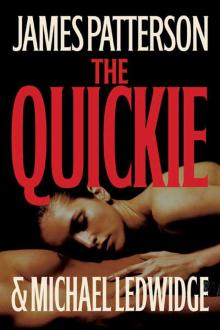 The Quickie
The Quickie Little Black Dress
Little Black Dress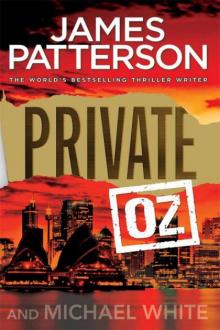 Private Oz
Private Oz Homeroom Diaries
Homeroom Diaries Gone
Gone Lifeguard
Lifeguard Kill Me if You Can
Kill Me if You Can Bullseye
Bullseye Confessions of a Murder Suspect
Confessions of a Murder Suspect Black Friday
Black Friday Manhunt
Manhunt Filthy Rich
Filthy Rich Step on a Crack
Step on a Crack Private
Private Private India
Private India Game Over
Game Over Private Sydney
Private Sydney The Murder House
The Murder House Mistress
Mistress I, Michael Bennett
I, Michael Bennett The Gift
The Gift The Postcard Killers
The Postcard Killers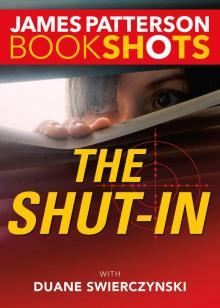 The Shut-In
The Shut-In The House Husband
The House Husband The Lost
The Lost I, Alex Cross
I, Alex Cross Going Bush
Going Bush 16th Seduction
16th Seduction The Jester
The Jester Along Came a Spider
Along Came a Spider The Lake House
The Lake House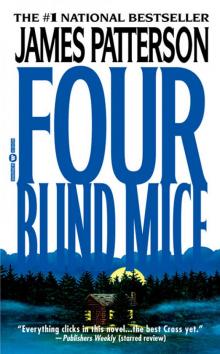 Four Blind Mice
Four Blind Mice Tick Tock
Tick Tock Private L.A.
Private L.A. Middle School, the Worst Years of My Life
Middle School, the Worst Years of My Life Cross Country
Cross Country The Final Warning
The Final Warning Word of Mouse
Word of Mouse Come and Get Us
Come and Get Us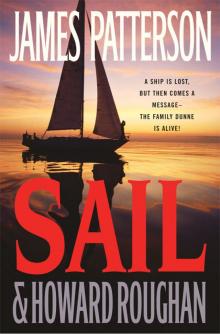 Sail
Sail I Funny TV: A Middle School Story
I Funny TV: A Middle School Story Private London
Private London Save Rafe!
Save Rafe! Swimsuit
Swimsuit Sam's Letters to Jennifer
Sam's Letters to Jennifer 3rd Degree
3rd Degree Double Cross
Double Cross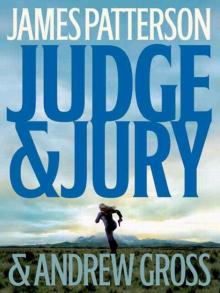 Judge & Jury
Judge & Jury Kiss the Girls
Kiss the Girls Second Honeymoon
Second Honeymoon Guilty Wives
Guilty Wives 1st to Die
1st to Die NYPD Red 4
NYPD Red 4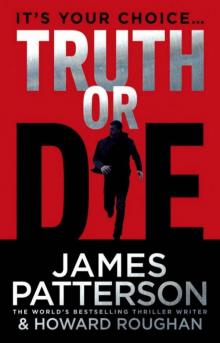 Truth or Die
Truth or Die Private Vegas
Private Vegas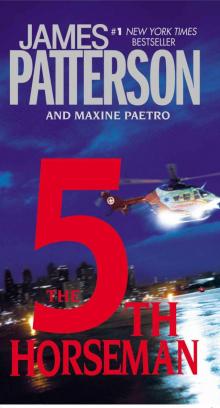 The 5th Horseman
The 5th Horseman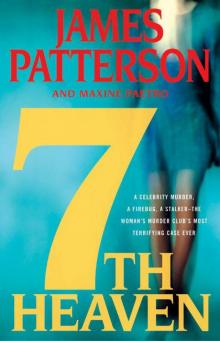 7th Heaven
7th Heaven I Even Funnier
I Even Funnier Cross My Heart
Cross My Heart Let’s Play Make-Believe
Let’s Play Make-Believe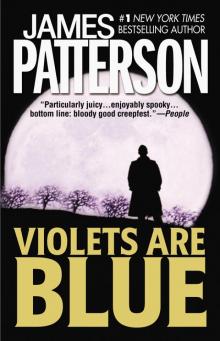 Violets Are Blue
Violets Are Blue Zoo
Zoo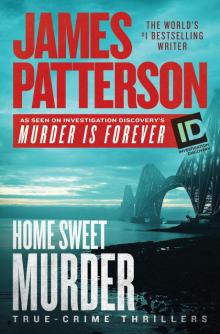 Home Sweet Murder
Home Sweet Murder The Private School Murders
The Private School Murders Alex Cross, Run
Alex Cross, Run Hunted: BookShots
Hunted: BookShots The Fire
The Fire Chase
Chase 14th Deadly Sin
14th Deadly Sin Bloody Valentine
Bloody Valentine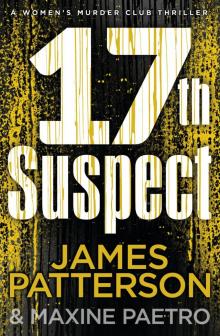 The 17th Suspect
The 17th Suspect The 8th Confession
The 8th Confession 4th of July
4th of July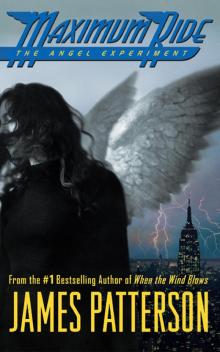 The Angel Experiment
The Angel Experiment Crazy House
Crazy House School's Out - Forever
School's Out - Forever Suzanne's Diary for Nicholas
Suzanne's Diary for Nicholas Cross Justice
Cross Justice Maximum Ride Forever
Maximum Ride Forever The Thomas Berryman Number
The Thomas Berryman Number Honeymoon
Honeymoon The Medical Examiner
The Medical Examiner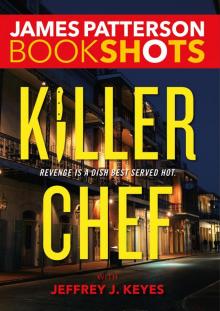 Killer Chef
Killer Chef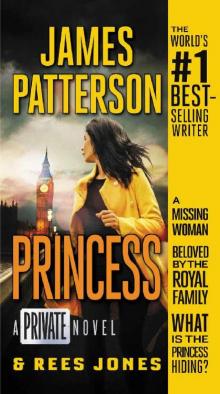 Private Princess
Private Princess Private Games
Private Games Burn
Burn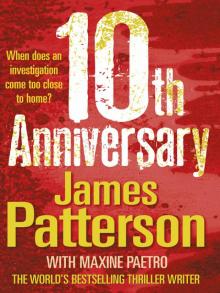 10th Anniversary
10th Anniversary I Totally Funniest: A Middle School Story
I Totally Funniest: A Middle School Story Taking the Titanic
Taking the Titanic The Lawyer Lifeguard
The Lawyer Lifeguard The 6th Target
The 6th Target Cross the Line
Cross the Line Alert
Alert Saving the World and Other Extreme Sports
Saving the World and Other Extreme Sports 1st Case
1st Case Unlucky 13
Unlucky 13 Haunted
Haunted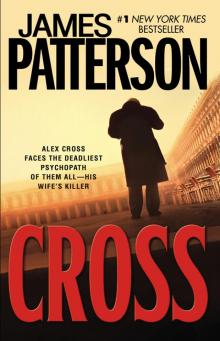 Cross
Cross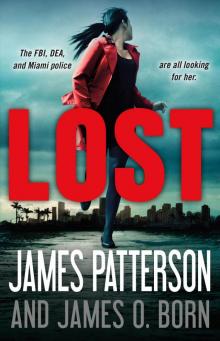 Lost
Lost 11th Hour
11th Hour Bookshots Thriller Omnibus
Bookshots Thriller Omnibus Target: Alex Cross
Target: Alex Cross Hope to Die
Hope to Die The Noise
The Noise Worst Case
Worst Case Dog's Best Friend
Dog's Best Friend Nevermore: The Final Maximum Ride Adventure
Nevermore: The Final Maximum Ride Adventure I Funny: A Middle School Story
I Funny: A Middle School Story NYPD Red
NYPD Red Till Murder Do Us Part
Till Murder Do Us Part Black & Blue
Black & Blue Fang
Fang Liar Liar
Liar Liar The Inn
The Inn Sundays at Tiffany's
Sundays at Tiffany's Middle School: Escape to Australia
Middle School: Escape to Australia Cat and Mouse
Cat and Mouse Instinct
Instinct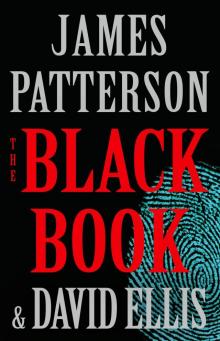 The Black Book
The Black Book London Bridges
London Bridges Toys
Toys The Last Days of John Lennon
The Last Days of John Lennon Roses Are Red
Roses Are Red Witch & Wizard
Witch & Wizard The Dolls
The Dolls The Christmas Wedding
The Christmas Wedding The River Murders
The River Murders The 18th Abduction
The 18th Abduction The 19th Christmas
The 19th Christmas Middle School: How I Got Lost in London
Middle School: How I Got Lost in London Just My Rotten Luck
Just My Rotten Luck Red Alert
Red Alert Walk in My Combat Boots
Walk in My Combat Boots Three Women Disappear
Three Women Disappear 21st Birthday
21st Birthday All-American Adventure
All-American Adventure Becoming Muhammad Ali
Becoming Muhammad Ali The Murder of an Angel
The Murder of an Angel The 13-Minute Murder
The 13-Minute Murder Rebels With a Cause
Rebels With a Cause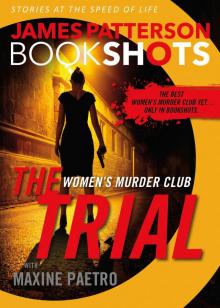 The Trial
The Trial Run for Your Life
Run for Your Life The House Next Door
The House Next Door NYPD Red 2
NYPD Red 2 Ali Cross
Ali Cross The Big Bad Wolf
The Big Bad Wolf Middle School: My Brother Is a Big, Fat Liar
Middle School: My Brother Is a Big, Fat Liar Private Paris
Private Paris Miracle on the 17th Green
Miracle on the 17th Green The People vs. Alex Cross
The People vs. Alex Cross The Beach House
The Beach House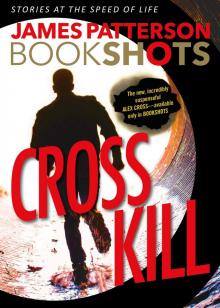 Cross Kill
Cross Kill Dog Diaries
Dog Diaries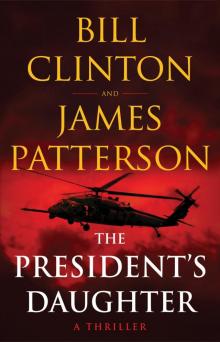 The President's Daughter
The President's Daughter Happy Howlidays
Happy Howlidays Detective Cross
Detective Cross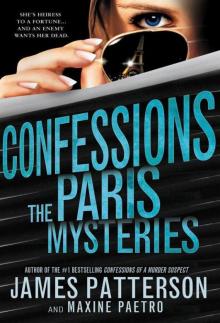 The Paris Mysteries
The Paris Mysteries Watch the Skies
Watch the Skies 113 Minutes
113 Minutes Alex Cross's Trial
Alex Cross's Trial NYPD Red 3
NYPD Red 3 Hush Hush
Hush Hush Now You See Her
Now You See Her Merry Christmas, Alex Cross
Merry Christmas, Alex Cross 2nd Chance
2nd Chance Private Royals
Private Royals Two From the Heart
Two From the Heart Max
Max I, Funny
I, Funny Blindside (Michael Bennett)
Blindside (Michael Bennett) Sophia, Princess Among Beasts
Sophia, Princess Among Beasts Armageddon
Armageddon Don't Blink
Don't Blink NYPD Red 6
NYPD Red 6 The First Lady
The First Lady Texas Outlaw
Texas Outlaw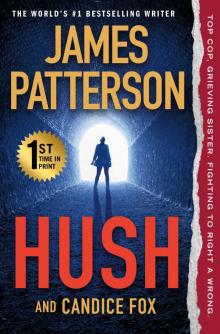 Hush
Hush Beach Road
Beach Road Private Berlin
Private Berlin The Family Lawyer
The Family Lawyer Jack & Jill
Jack & Jill The Midwife Murders
The Midwife Murders Middle School: Rafe's Aussie Adventure
Middle School: Rafe's Aussie Adventure The Murder of King Tut: The Plot to Kill the Child King
The Murder of King Tut: The Plot to Kill the Child King First Love
First Love The Dangerous Days of Daniel X
The Dangerous Days of Daniel X Hawk
Hawk Private Delhi
Private Delhi The 20th Victim
The 20th Victim The Shadow
The Shadow Katt vs. Dogg
Katt vs. Dogg The Palm Beach Murders
The Palm Beach Murders 2 Sisters Detective Agency
2 Sisters Detective Agency Humans, Bow Down
Humans, Bow Down You've Been Warned
You've Been Warned Cradle and All
Cradle and All 20th Victim: (Women’s Murder Club 20) (Women's Murder Club)
20th Victim: (Women’s Murder Club 20) (Women's Murder Club) Season of the Machete
Season of the Machete Woman of God
Woman of God Mary, Mary
Mary, Mary Blindside
Blindside Invisible
Invisible The Chef
The Chef Revenge
Revenge See How They Run
See How They Run Pop Goes the Weasel
Pop Goes the Weasel 15th Affair
15th Affair Middle School: Get Me Out of Here!
Middle School: Get Me Out of Here! Middle School: How I Survived Bullies, Broccoli, and Snake Hill
Middle School: How I Survived Bullies, Broccoli, and Snake Hill From Hero to Zero - Chris Tebbetts
From Hero to Zero - Chris Tebbetts G'day, America
G'day, America Max Einstein Saves the Future
Max Einstein Saves the Future The Cornwalls Are Gone
The Cornwalls Are Gone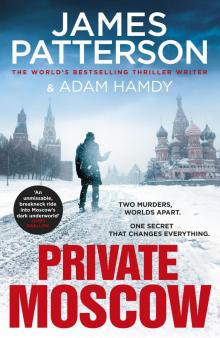 Private Moscow
Private Moscow Two Schools Out - Forever
Two Schools Out - Forever Hollywood 101
Hollywood 101 Deadly Cargo: BookShots
Deadly Cargo: BookShots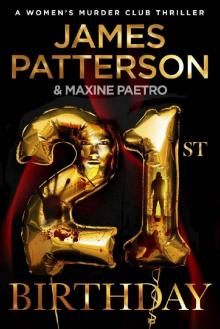 21st Birthday (Women's Murder Club)
21st Birthday (Women's Murder Club) The Sky Is Falling
The Sky Is Falling Cajun Justice
Cajun Justice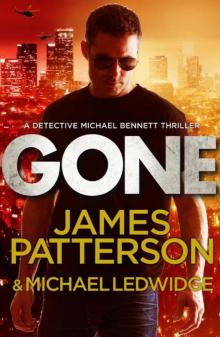 Bennett 06 - Gone
Bennett 06 - Gone The House of Kennedy
The House of Kennedy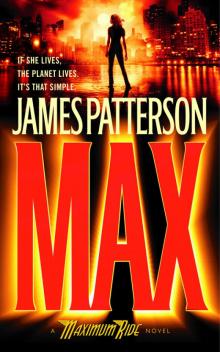 Waterwings
Waterwings Murder is Forever, Volume 2
Murder is Forever, Volume 2 Maximum Ride 02
Maximum Ride 02 Treasure Hunters--The Plunder Down Under
Treasure Hunters--The Plunder Down Under Private Royals: BookShots (A Private Thriller)
Private Royals: BookShots (A Private Thriller) After the End
After the End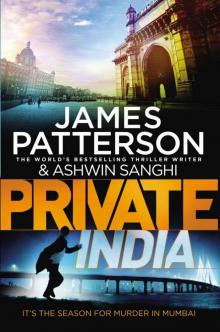 Private India: (Private 8)
Private India: (Private 8)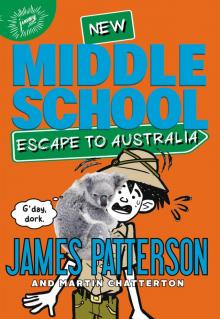 Escape to Australia
Escape to Australia WMC - First to Die
WMC - First to Die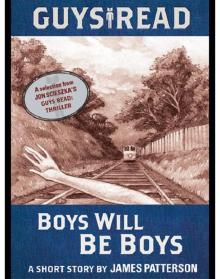 Boys Will Be Boys
Boys Will Be Boys The Red Book
The Red Book 11th hour wmc-11
11th hour wmc-11 Hidden
Hidden You've Been Warned--Again
You've Been Warned--Again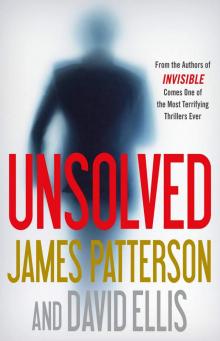 Unsolved
Unsolved Pottymouth and Stoopid
Pottymouth and Stoopid Hope to Die: (Alex Cross 22)
Hope to Die: (Alex Cross 22) The Moores Are Missing
The Moores Are Missing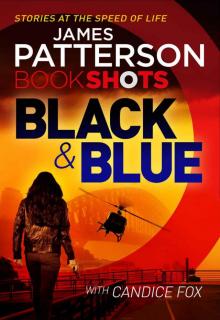 Black & Blue: BookShots (Detective Harriet Blue Series)
Black & Blue: BookShots (Detective Harriet Blue Series) Airport - Code Red: BookShots
Airport - Code Red: BookShots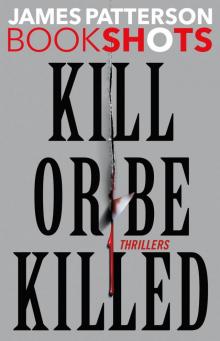 Kill or Be Killed
Kill or Be Killed School's Out--Forever
School's Out--Forever When the Wind Blows
When the Wind Blows Heist: BookShots
Heist: BookShots Murder of Innocence (Murder Is Forever)
Murder of Innocence (Murder Is Forever) Red Alert_An NYPD Red Mystery
Red Alert_An NYPD Red Mystery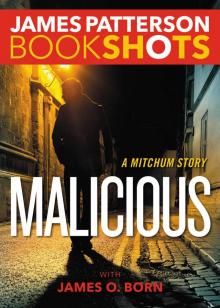 Malicious
Malicious Scott Free
Scott Free The Summer House
The Summer House French Kiss
French Kiss Treasure Hunters
Treasure Hunters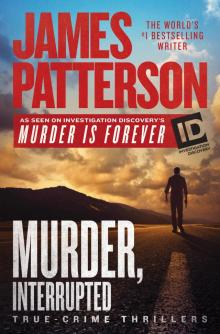 Murder Is Forever, Volume 1
Murder Is Forever, Volume 1 Secret of the Forbidden City
Secret of the Forbidden City Cross the Line: (Alex Cross 24)
Cross the Line: (Alex Cross 24) Witch & Wizard: The Fire
Witch & Wizard: The Fire![Women's Murder Club [06] The 6th Target Read online](http://i1.bookreadfree.com/i/03/24/womens_murder_club_06_the_6th_target_preview.jpg) Women's Murder Club [06] The 6th Target
Women's Murder Club [06] The 6th Target Cross My Heart ac-21
Cross My Heart ac-21 Alex Cross’s Trial ак-15
Alex Cross’s Trial ак-15 Alex Cross 03 - Jack & Jill
Alex Cross 03 - Jack & Jill Liar Liar: (Harriet Blue 3) (Detective Harriet Blue Series)
Liar Liar: (Harriet Blue 3) (Detective Harriet Blue Series) Cross Country ак-14
Cross Country ак-14 Honeymoon h-1
Honeymoon h-1 Maximum Ride: The Angel Experiment
Maximum Ride: The Angel Experiment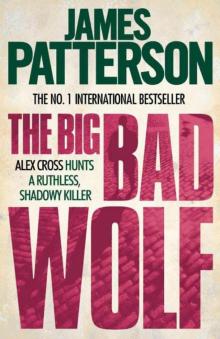 The Big Bad Wolf ак-9
The Big Bad Wolf ак-9 Dead Heat: BookShots (Book Shots)
Dead Heat: BookShots (Book Shots)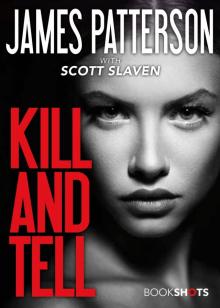 Kill and Tell
Kill and Tell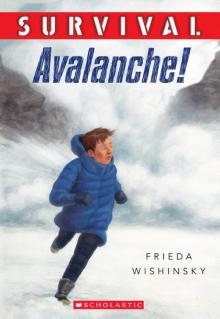 Avalanche
Avalanche Robot Revolution
Robot Revolution Public School Superhero
Public School Superhero 12th of Never
12th of Never Max: A Maximum Ride Novel
Max: A Maximum Ride Novel All-American Murder
All-American Murder Murder Games
Murder Games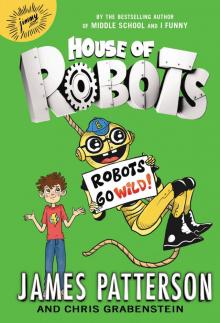 Robots Go Wild!
Robots Go Wild! My Life Is a Joke
My Life Is a Joke Private: Gold
Private: Gold Demons and Druids
Demons and Druids Jacky Ha-Ha
Jacky Ha-Ha Postcard killers
Postcard killers Princess: A Private Novel
Princess: A Private Novel Kill Alex Cross ac-18
Kill Alex Cross ac-18 12th of Never wmc-12
12th of Never wmc-12 The Murder of King Tut
The Murder of King Tut I Totally Funniest
I Totally Funniest Cross Fire ак-17
Cross Fire ак-17 Count to Ten
Count to Ten![Women's Murder Club [10] 10th Anniversary Read online](http://i1.bookreadfree.com/i1/03/30/womens_murder_club_10_10th_anniversary_preview.jpg) Women's Murder Club [10] 10th Anniversary
Women's Murder Club [10] 10th Anniversary![Women's Murder Club [01] 1st to Die Read online](http://i1.bookreadfree.com/i1/03/31/womens_murder_club_01_1st_to_die_preview.jpg) Women's Murder Club [01] 1st to Die
Women's Murder Club [01] 1st to Die I, Michael Bennett mb-5
I, Michael Bennett mb-5 Nooners
Nooners![Women's Murder Club [08] The 8th Confession Read online](http://i1.bookreadfree.com/i1/04/03/womens_murder_club_08_the_8th_confession_preview.jpg) Women's Murder Club [08] The 8th Confession
Women's Murder Club [08] The 8th Confession Private jm-1
Private jm-1 Treasure Hunters: Danger Down the Nile
Treasure Hunters: Danger Down the Nile Worst Case mb-3
Worst Case mb-3 Don’t Blink
Don’t Blink The Games
The Games The Medical Examiner: A Women's Murder Club Story
The Medical Examiner: A Women's Murder Club Story Black Market
Black Market Gone mb-6
Gone mb-6![Women's Murder Club [02] 2nd Chance Read online](http://i1.bookreadfree.com/i1/04/04/womens_murder_club_02_2nd_chance_preview.jpg) Women's Murder Club [02] 2nd Chance
Women's Murder Club [02] 2nd Chance French Twist
French Twist Kenny Wright
Kenny Wright Manhunt: A Michael Bennett Story
Manhunt: A Michael Bennett Story Cross Kill: An Alex Cross Story
Cross Kill: An Alex Cross Story Confessions of a Murder Suspect td-1
Confessions of a Murder Suspect td-1 Second Honeymoon h-2
Second Honeymoon h-2 Chase_A BookShot_A Michael Bennett Story
Chase_A BookShot_A Michael Bennett Story Confessions: The Paris Mysteries
Confessions: The Paris Mysteries![Women's Murder Club [09] The 9th Judgment Read online](http://i1.bookreadfree.com/i2/04/08/womens_murder_club_09_the_9th_judgment_preview.jpg) Women's Murder Club [09] The 9th Judgment
Women's Murder Club [09] The 9th Judgment Absolute Zero
Absolute Zero Nevermore: The Final Maximum Ride Adventure mr-8
Nevermore: The Final Maximum Ride Adventure mr-8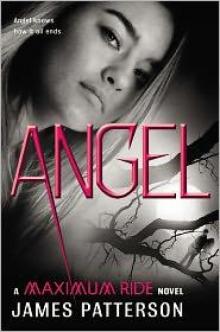 Angel: A Maximum Ride Novel mr-7
Angel: A Maximum Ride Novel mr-7 Juror #3
Juror #3 Million-Dollar Mess Down Under
Million-Dollar Mess Down Under The Verdict: BookShots (A Jon Roscoe Thriller)
The Verdict: BookShots (A Jon Roscoe Thriller)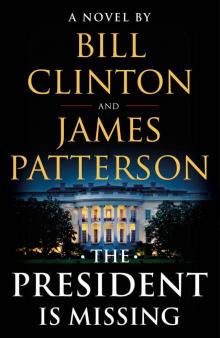 The President Is Missing: A Novel
The President Is Missing: A Novel![Women's Murder Club [04] 4th of July Read online](http://i1.bookreadfree.com/i2/04/06/womens_murder_club_04_4th_of_july_preview.jpg) Women's Murder Club [04] 4th of July
Women's Murder Club [04] 4th of July The Hostage: BookShots (Hotel Series)
The Hostage: BookShots (Hotel Series) $10,000,000 Marriage Proposal
$10,000,000 Marriage Proposal Diary of a Succubus
Diary of a Succubus Unbelievably Boring Bart
Unbelievably Boring Bart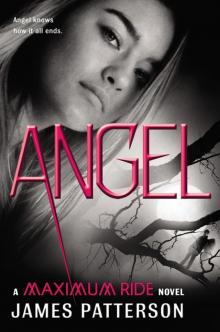 Angel: A Maximum Ride Novel
Angel: A Maximum Ride Novel Stingrays
Stingrays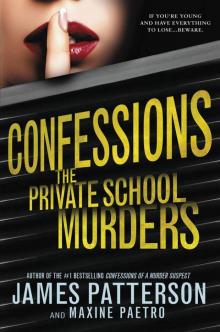 Confessions: The Private School Murders
Confessions: The Private School Murders Stealing Gulfstreams
Stealing Gulfstreams![Women's Murder Club [05] The 5th Horseman Read online](http://i1.bookreadfree.com/i2/04/05/womens_murder_club_05_the_5th_horseman_preview.jpg) Women's Murder Club [05] The 5th Horseman
Women's Murder Club [05] The 5th Horseman Zoo 2
Zoo 2 Jack Morgan 02 - Private London
Jack Morgan 02 - Private London Treasure Hunters--Quest for the City of Gold
Treasure Hunters--Quest for the City of Gold The Christmas Mystery
The Christmas Mystery Murder in Paradise
Murder in Paradise Kidnapped: BookShots (A Jon Roscoe Thriller)
Kidnapped: BookShots (A Jon Roscoe Thriller)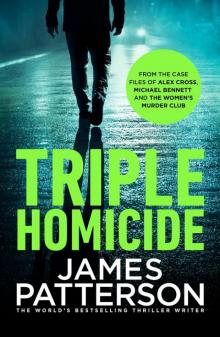 Triple Homicide_Thrillers
Triple Homicide_Thrillers 16th Seduction: (Women’s Murder Club 16) (Women's Murder Club)
16th Seduction: (Women’s Murder Club 16) (Women's Murder Club)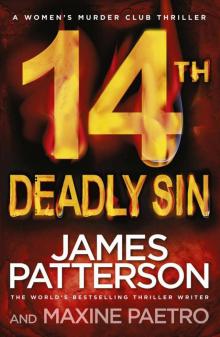 14th Deadly Sin: (Women’s Murder Club 14)
14th Deadly Sin: (Women’s Murder Club 14) Texas Ranger
Texas Ranger Witch & Wizard 04 - The Kiss
Witch & Wizard 04 - The Kiss![Women's Murder Club [03] 3rd Degree Read online](http://i1.bookreadfree.com/i2/04/12/womens_murder_club_03_3rd_degree_preview.jpg) Women's Murder Club [03] 3rd Degree
Women's Murder Club [03] 3rd Degree Break Point: BookShots
Break Point: BookShots Alex Cross 04 - Cat & Mouse
Alex Cross 04 - Cat & Mouse Maximum Ride
Maximum Ride Fifty Fifty: (Harriet Blue 2) (Detective Harriet Blue Series)
Fifty Fifty: (Harriet Blue 2) (Detective Harriet Blue Series) Alex Cross 02 - Kiss the Girls
Alex Cross 02 - Kiss the Girls The President Is Missing
The President Is Missing Hunted
Hunted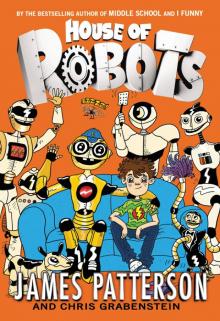 House of Robots
House of Robots Dangerous Days of Daniel X
Dangerous Days of Daniel X Tick Tock mb-4
Tick Tock mb-4 10th Anniversary wmc-10
10th Anniversary wmc-10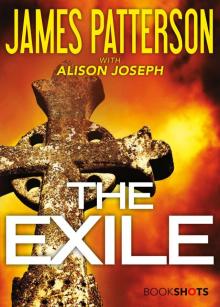 The Exile
The Exile Private Games-Jack Morgan 4 jm-4
Private Games-Jack Morgan 4 jm-4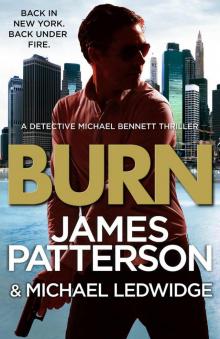 Burn: (Michael Bennett 7)
Burn: (Michael Bennett 7) Laugh Out Loud
Laugh Out Loud The People vs. Alex Cross: (Alex Cross 25)
The People vs. Alex Cross: (Alex Cross 25)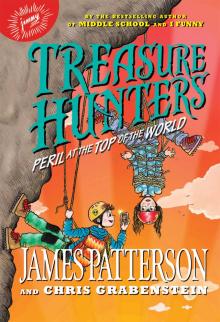 Peril at the Top of the World
Peril at the Top of the World I Funny TV
I Funny TV Merry Christmas, Alex Cross ac-19
Merry Christmas, Alex Cross ac-19 #1 Suspect jm-3
#1 Suspect jm-3 Fang: A Maximum Ride Novel
Fang: A Maximum Ride Novel![Women's Murder Club [07] 7th Heaven Read online](http://i1.bookreadfree.com/i2/04/13/womens_murder_club_07_7th_heaven_preview.jpg) Women's Murder Club [07] 7th Heaven
Women's Murder Club [07] 7th Heaven The End
The End